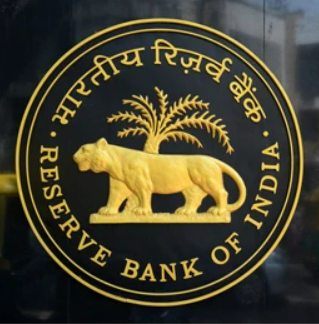RBI Compounding Application
The Reserve Bank of India (RBI) compounding application refers to the process through which individuals or entities seek approval from the RBI for compounding of certain contraventions or violations of foreign exchange regulations. Compounding refers to the process of voluntarily admitting the contravention, submitting an application to the RBI, and paying a monetary penalty in exchange for the RBI’s approval to close the matter without any further legal proceedings.

RBI Compounding Application
Purpose of Compounding: Compounding enables individuals, entities, or firms to regularize contraventions and resolve non-compliance issues with the RBI.It provides a way to settle matters without undergoing lengthy legal proceedings or facing severe penalties.
Types of Contraventions Compounded by RBI: Contraventions under the Foreign Exchange Management Act (FEMA), 1999.Contraventions under the Banking Regulation Act, 1949.Contraventions related to regulations administered by the RBI, including regulations concerning Non-Banking Financial Companies (NBFCs), cooperative banks, payment systems, etc.
Procedure for Compounding Application: Individuals or entities involved in contraventions can submit a compounding application to the RBI. The application must include details of the contravention, circumstances, reasons, and any mitigating factors. Supporting documents substantiating the details provided in the application should be attached. The application should be made within the stipulated time frame as per RBI guidelines.
Review and Processing: The RBI reviews the compounding application along with the supporting documents submitted. If the application is incomplete or lacks necessary details, the RBI may seek additional information. The RBI may also conduct an investigation or seek clarification from the applicant or other relevant parties.
Decision and Imposition of Penalty: Based on the review, the RBI may decide to compound the contravention. The RBI imposes a monetary penalty as per the compounding guidelines and the severity of the contravention. Upon acceptance of the compounding proposal and payment of the prescribed penalty, the contravention is considered settled.
Post-Compounding Compliance: After compounding, the individual or entity is required to comply with any additional conditions or directives specified by the RBI. Regular compliance monitoring and reporting may be necessary as per RBI instructions.
Disclosure and Reporting: Compounding orders issued by the RBI are disclosed on its website or through other official communication channels.The RBI may also issue press releases or notices regarding compounding decisions for public awareness.
Appeals and Review: Individuals or entities dissatisfied with the compounding decision may have the option to appeal or seek review through prescribed channels. The RBI may reconsider its decision based on new evidence, legal interpretations, or procedural grounds.
Legal Implications: Compounding does not absolve individuals or entities from civil or criminal liability that may arise from contraventions.Compounded contraventions may still be subject to scrutiny by other regulatory or enforcement authorities.
Consultation and Legal Advice: Individuals or entities contemplating compounding should seek legal advice and consult with experts familiar with RBI regulations and compounding procedures. Professional assistance can help navigate the process effectively and ensure compliance with regulatory requirements.
Application for Compounding
Gather Necessary Information and Documents: Collect all relevant information regarding the contravention, including details of the transaction, regulatory provisions violated, and any mitigating circumstances. Prepare supporting documents such as transaction records, contracts, agreements, correspondence, financial statements, and any other relevant paperwork.
Understand Compounding Guidelines: Familiarize yourself with the compounding guidelines issued by the RBI for contraventions under various regulationsReview the criteria for eligibility, prescribed penalties, documentation requirements, and procedural aspects outlined in the compounding framework.
Draft the Compounding Application: Prepare a formal compounding application addressed to the RBI, specifying the contravention(s) for which compounding is sought. Include details of the contravention, circumstances leading to the contravention, corrective measures taken, and any other relevant information.Clearly articulate the reasons for seeking compounding and highlight any mitigating factors or extenuating circumstances.
Complete Application Form: If the RBI provides a standardized compounding application form, ensure that all sections are duly filled out with accurate and complete information.Double-check the application form for any errors, omissions, or inconsistencies before submission.
Compile Supporting Documents: Organize and attach all supporting documents and evidence substantiating the details provided in the compounding application.Ensure that the supporting documents are legible, properly labeled, and arranged in a logical sequence for easy reference.
Submit Application to the RBI: Send the completed compounding application along with the supporting documents to the designated address specified by the RBI.Ensure that the application is submitted within the stipulated timeframe prescribed by the RBI guidelines or regulatory provisions.
Follow-up and Communication: Monitor the progress of the compounding application and be responsive to any queries or requests for additional information from the RBI. Maintain open communication channels with the RBI officials handling the compounding process and promptly address any concerns or issues raised during the review.
Await Decision and Compliance: Await the RBI’s decision on the compounding application, which may involve a review of the submitted materials and an assessment of the contravention(s) in question.If the compounding application is approved, comply with the prescribed penalty amount and any additional conditions or directives specified by the RBI.
Record Keeping and Documentation: Maintain detailed records of the compounding application, correspondence with the RBI, and all related documents for future reference and compliance purposes. Ensure that the compounding order and related communications are properly documented and retained in accordance with regulatory requirements.
Seek Legal Advice if Necessary: Consider seeking legal advice or consulting with experts familiar with RBI regulations and compounding procedures to navigate the process effectively and address any legal complexities or uncertainties.
Documents Required for RBI Compounding Application
Cover Letter: A formal cover letter addressed to the RBI, providing an overview of the compounding application and specifying the contravention(s) for which compounding is sought.
Compounding Application Form: A duly filled and signed compounding application form, if provided by the RBI, containing detailed information about the applicant, contravention(s), and other relevant details.
Supporting Documents:
Transaction Records: Relevant documents related to the transaction(s) in question, including agreements, contracts, invoices, purchase orders, sales receipts, shipping documents, etc.
Financial Statements: Copies of financial statements, balance sheets, profit and loss statements, cash flow statements, and other financial records relevant to the contravention(s).
Regulatory Filings: Copies of regulatory filings, reports, declarations, disclosures, and other submissions made to regulatory authorities pertaining to the contravention(s).
Correspondence: Copies of any correspondence, communications, notices, or letters exchanged with the RBI or other regulatory authorities regarding the contravention(s).
Legal Documents: Copies of legal documents, contracts, agreements, leases, permits, licenses, regulatory approvals, and other legal instruments relevant to the contravention(s).
Internal Reports: Any internal reports, memoranda, assessments, or analyses prepared by the applicant or their advisors regarding the contravention(s) and the compounding application.
Other Relevant Records: Any other relevant documents, records, or evidence that substantiate the details provided in the compounding application and support the applicant’s case.
Affidavit or Declaration: An affidavit or declaration signed by the authorized representative of the applicant affirming the accuracy, completeness, and truthfulness of the information provided in the compounding application and supporting documents.
Power of Attorney (if applicable): A power of attorney document authorizing the individual or entity representing the applicant to act on their behalf in matters related to the compounding application.
Consent and Undertakings: Any required consent forms, undertakings, or declarations acknowledging the terms and conditions of the compounding process and agreeing to comply with the RBI’s directives and requirements.
Additional Information (if necessary): Any additional information, clarifications, or explanations requested by the RBI or deemed necessary to support the compounding application and facilitate the review process.
Payment of Compounding Fee: Payment of the prescribed compounding fee as per the RBI guidelines and instructions, if applicable.
Any Other Documents as Required: Any other documents or records specifically requested by the RBI or deemed relevant to the compounding application process based on the nature of the contravention(s) and regulatory requirements.
Procedure for RBI Compounding Application
Review RBI Guidelines: Familiarize yourself with the RBI’s compounding guidelines and regulations governing the compounding of contraventions under various RBI-administered laws, including the Foreign Exchange Management Act (FEMA) and other relevant statutes.
Identify Contraventions: Identify the specific contraventions or regulatory violations for which compounding is being sought.
Conduct a thorough assessment of the facts, circumstances, and implications of the contraventions to determine the appropriate course of action.
Gather Required Information and Documents: Collect all relevant information, documents, and evidence pertaining to the contraventions, including transaction records, financial statements, regulatory filings, legal documents, correspondence, and any other supporting materials.
Prepare Compounding Application:
Draft a comprehensive compounding application addressing the contraventions, providing details of the transactions or actions involved, explaining the circumstances leading to the contraventions, and outlining any mitigating factors or remedial measures taken.
Complete Application Form: If the RBI provides a standardized compounding application form, ensure that all sections are accurately filled out with the required information.
Double-check the application form for completeness, accuracy, and compliance with RBI guidelines.
Compile Supporting Documents: Organize and compile all supporting documents and evidence substantiating the details provided in the compounding application.
Ensure that the supporting documents are properly labeled, arranged in a logical sequence, and attached securely to the application.
Submission of Application: Submit the compounding application along with the supporting documents to the designated authority or department within the RBI.
Follow the prescribed submission procedures, including the mode of submission, address for sending the application, and any specific instructions provided by the RBI.
Acknowledgment and Processing: Upon receipt of the compounding application, the RBI may acknowledge the receipt and initiate the processing of the application.
The application may undergo a thorough review, including an assessment of the contraventions, examination of the supporting documents, and verification of the information provided.
Communication and Clarifications: Be prepared to respond promptly to any queries, requests for clarification, or additional information sought by the RBI during the review process.
Maintain open communication channels with the RBI officials handling the compounding application and address any concerns or issues raised in a timely manner.
Decision and Notification: Await the RBI’s decision on the compounding application, which may involve the imposition of a monetary penalty, conditions for compliance, or any other directives deemed necessary by the RBI.
Once a decision is made, the RBI will notify the applicant of the outcome, including the terms and conditions of the compounding order.
Compliance and Payment: Comply with the terms and conditions specified in the compounding order issued by the RBI.
Pay the prescribed compounding fee or penalty amount within the stipulated timeframe, as per the instructions provided by the RBI.
Record Keeping: Maintain detailed records of the compounding application, correspondence with the RBI, compounding order, payment receipts, and any other relevant documentation for future reference and compliance purposes.
Post-Compounding Compliance: Ensure ongoing compliance with regulatory requirements and adhere to any additional conditions or directives specified by the RBI in the compounding order.
Implement remedial measures and internal controls to prevent recurrence of contraventions in the future.



